
The United States performs 40 to 50 million major procedures annually — a staggering number that doesn’t include minor surgeries. This high volume of operations demands efficient workflows in the operating room (OR). However, many healthcare facilities face challenges in surgical storage, which can hinder efficiency and disrupt workflows.
Addressing these challenges with simple and effective storage solutions is crucial for maintaining organized and efficient surgical suites. This blog explores the common storage issues surgical units face and presents practical solutions to overcome them, enhancing space utilization and supply management.
Supplies are best kept in ventilated cabinets and restricted areas to limit contamination risk, but surgical units are often small and don’t have the space to store supplies properly. Staff may stockpile materials in inconvenient places or run back and forth between storage sections in search of supplies, wasting valuable time.
Hospitals may need to search for alternative, space-efficient storage solutions that make the most of tight spaces, such as compact and mounted cabinets. These options maximize vertical wall space instead of adding clutter to a busy surgical area.
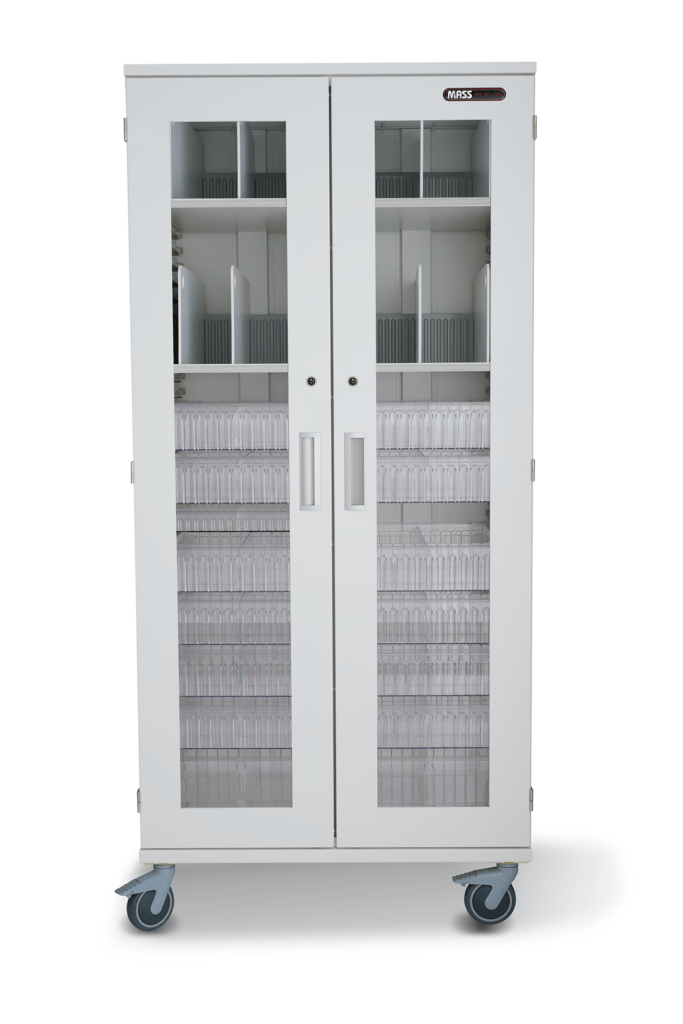
Customizable compact storage cabinets are ideal for limited space. Surgical units continually add new technologies, supplies, and machines that take up valuable square footage. Adding oversized storage cabinets creates more clutter and disorganization and promotes expensive overstocking.
Instead, look for compact cabinets with stackable shelves and trays that take advantage of vertical space without consuming a large footprint. For example, the FLX Storage Cabinet from Capsa Healthcare comes in many sizes and features trays and slot shelves for maximum storage. Plus, you can customize the cart for hard-to-fit areas.
Install these carts directly in your storage area or add premium casters for extra mobility. With a compact and mobile solution, you can quickly move your supplies to high-need areas without multiple trips.
Another option is to create stationary cabinets. With dozens of mobile equipment and carts in the surgical unit, mounting or placing cabinets against the walls can free up more space. Staff have fewer items to navigate, creating a more efficient and clutter-free work area.
Cabinets like the MAX Storage Cabinets can be inserted into the wall, mounted on the upper or lower part of the wall, and have mobile options. These keep items out of the way while also maximizing space. Look for features that allow a quick view of supplies, such as glass doors, translucent shelving, and door-activated LED lighting.
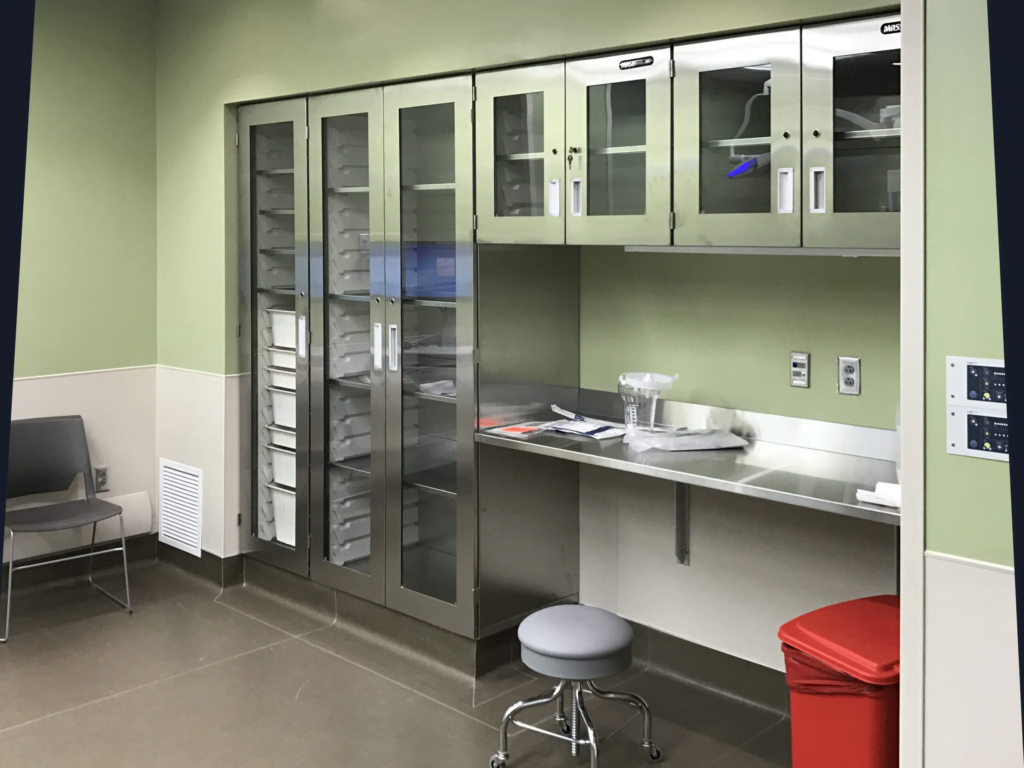
Surgical procedures can quickly become complicated, and time spent rummaging through disorganized supplies can be a matter of life or death. The issue of improperly labeled supplies or widespread materials can impact patient outcomes and the entire surgery schedule. With hundreds of patients entering the OR, these supply management problems can lead to significant surgery delays.
The answer to disorganization is to systemize and place the storage supply in critical locations using shelving arrangements with labeling, categorization, and digital cataloging.
Supply organization systems are the components within your medical storage cabinets, such as drawers, compartments, and dividers, or how you arrange your supplies. Effective surgical storage optimization combines these two systems.
Start with a cabinet with reconfigurable interior components that you can tailor to your needs. Then, separate your supplies by categories and keep similar items together in these compartments. Add labels for easy sorting and retrieval and organize alphabetically for extra structure.
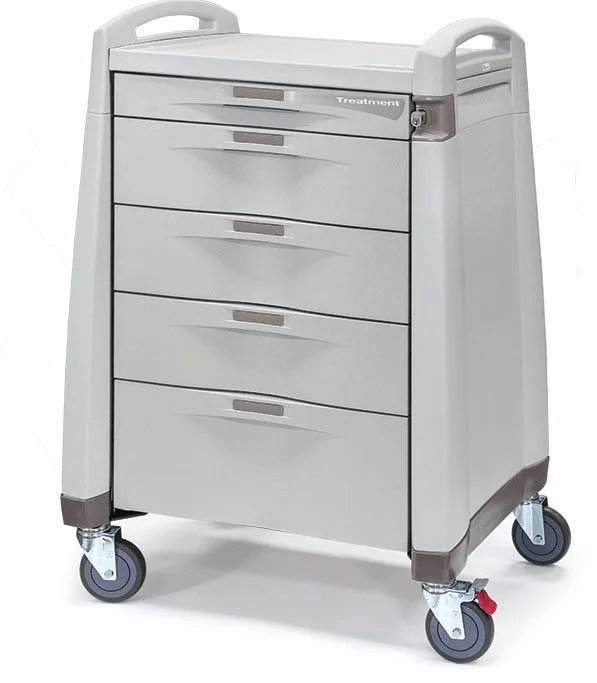
Consider inventory software that digitally catalogs supplies using barcodes. With these combined solutions, you can scan items in and out of inventory and keep track of supplies more efficiently.
Drawers with divider systems are another option for organized surgical supply management. With flexible dividers and removable trays, these systems keep supplies in place and avoid accidental mix-ups.
Mobile medical carts, such as the Avalo Treatment Cart, help keep supplies on hand for quick access and in a convenient location. Optimize different drawer and accessory options to separate surgical supplies from medications or other essential items and quickly move them from unit to unit.
Many surgical units use a central storage area or multiple storage rooms spread around the facility. However, these setups are inconvenient and get in the way of last-minute or urgent supply needs. Running for supplies can affect patient outcomes, the OR schedule, and overall case turnaround.
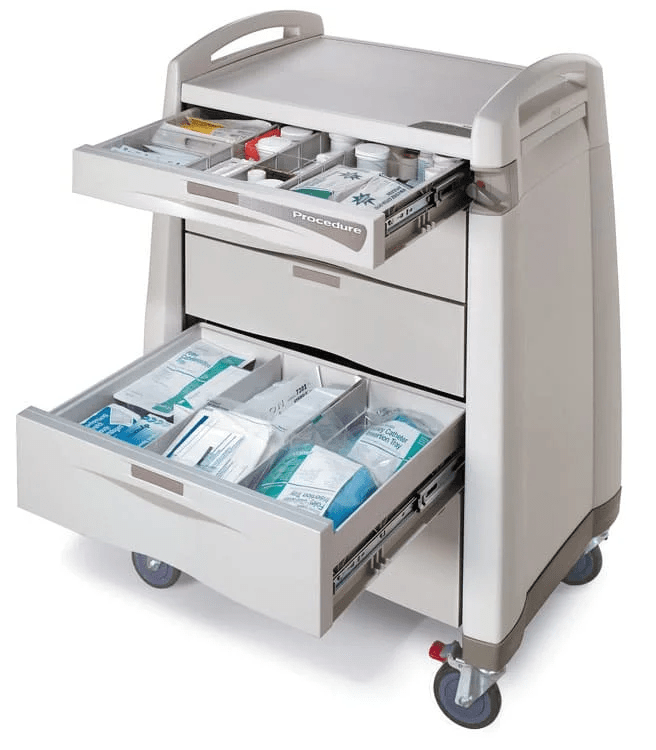
Mobile, rapid-response carts keep the right supplies where you need them. Whether for routine or emergency, procedure crash carts shorten the distance from storage to staff and are compact enough to move between units or beds.
Mobile carts add flexibility and orderly access to your storage systems. A compact cart, such as the Avalo Procedure Cart, guarantees staff has the right tools and supplies for emergencies. These mobile carts move seamlessly between ORs without adding clutter to the room.
Compact crash carts keep emergency supplies immediately available for rapid code response. Breakaway locking features provide tamper-evident seals that secure supplies but allow quick entry with one swift motion. These locking handles eliminate sticky locks while maintaining sensitive medication security.
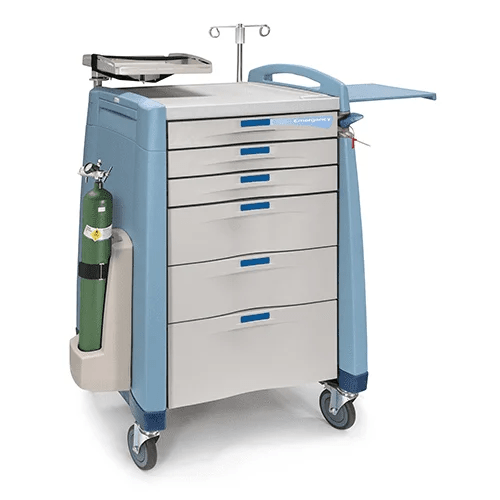
Medication management and supply security is one of several significant surgical storage challenges. Staff need convenient access to supplies, but simple or weak locking mechanisms and an absence of tracking tools also open medications and supplies to diversion.
Look for medical storage cabinets or carts with auto locks or programmable keyless locks to secure supplies. Additional designated sharps and medication storage protect supplies from unauthorized access.
Keyless and auto locks upgrade medication security and are especially useful for narcotics. With keyless locks, you can designate unique codes for each user, allowing better insight into medication access and user activity.
Staff do not have to worry about managing keys and can quickly gain entry with a code instead. Add additional security with auto locks, which lock down carts and supplies after no activity.
Organized supply storage is vital to an efficient surgical process and OR. Identifying key pain points within your facility will help you choose the best solution that meets your needs. Medical storage cabinets and carts from Capsa Healthcare are customizable and help you create order in your workflow. Enjoy the different benefits of a procedure cart, including streamlined surgical storage space and better schedule management. Get in touch today.